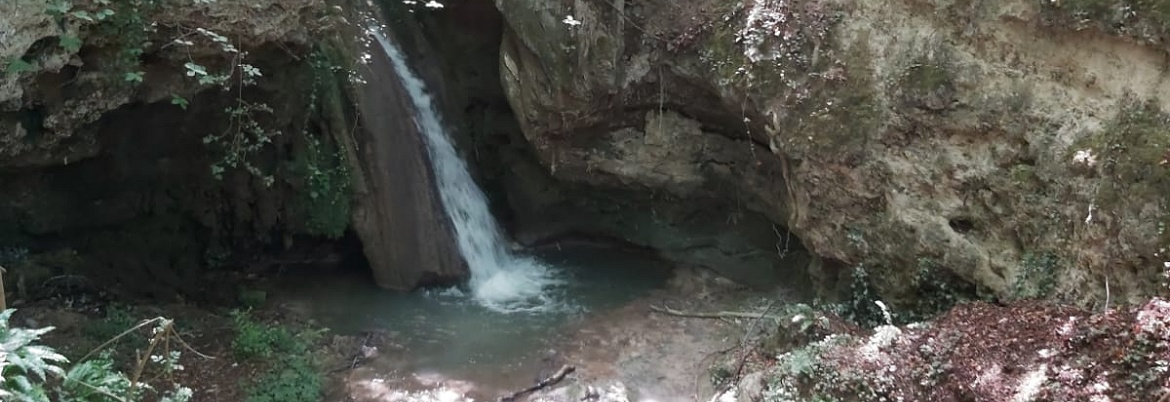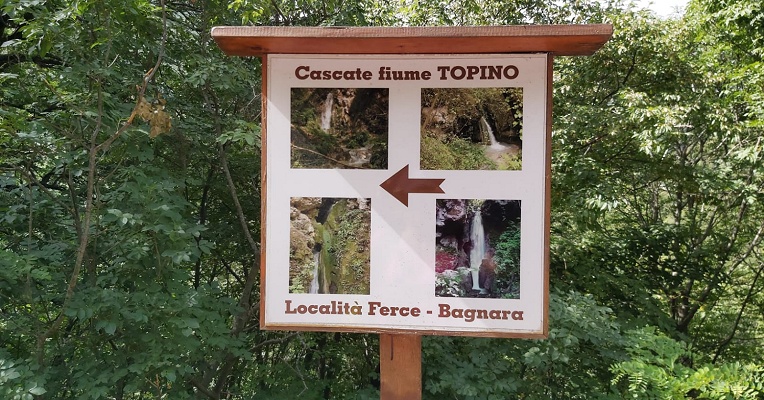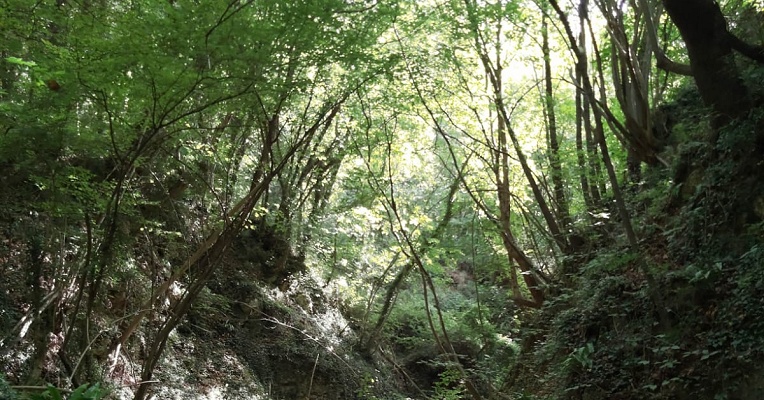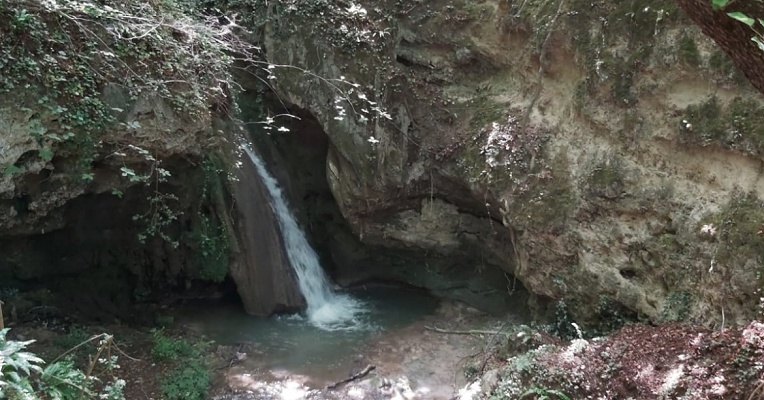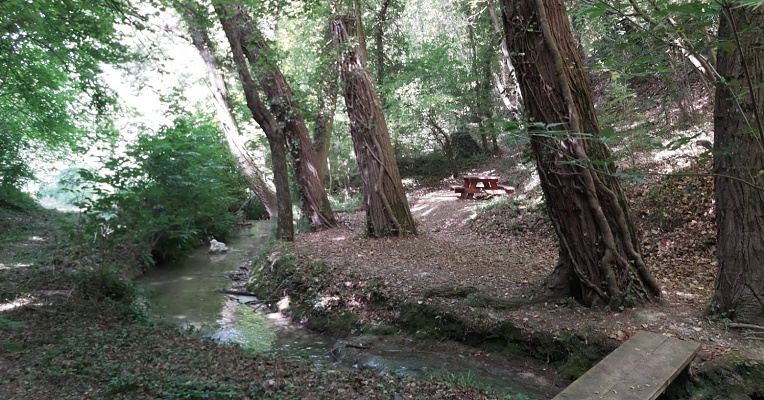On the slopes of Monte Pennino, in the locality of Bagnara, at about 649 m a.s.l., springs the Topino river, which for millennia has represented a water wealth for the surrounding areas - from Nocera Umbra to Foligno, Bevagna and Bettona, and for the water supply of Perugia itself.
The great jump and the five waterfalls
The river course in the Bagnara area develops on the 'majolica' or white limestone deposits of marine origin, approximately 141 million years old. The basement is, however, not visible due to the subsequent deposit of a stratified limestone, the so-called 'Travertine of Aggi'.
About 1 kilometre from Bagnara, right near Aggi, the river makes a drop of about 80 metres.
The considerable difference in height of faults, modelling the river's morphology, created the steps that force the water to 'jump', giving rise to a very impressive natural spectacle, the Ferce waterfalls.
It is possible that the name 'Ferce' derives from the dialectal form of Ferns, plants that probably characterised the landscape, which is still particularly luxuriant today.
The first waterfall is about 8 metres high, while the second waterfall is characterised by an even higher and continuous, uninterrupted drop.
The most impressive is the fourth waterfall, with two jumps joining in a central cavity.
In the third waterfall, travertine stratifications of various consistencies can be seen, revealing the different phases of deposition generated by the strong movement of the water.
The richness of the water, between flora, fauna and ancient factories
The course of the river in this area is surrounded by luxuriant riparian vegetation: tall Italic and cypress poplars, varieties of willows and bank plants.
The beautiful river landscape is also home to many animal species, including the river nightingale, which is hardly visible, but whose loud song can be heard all year round. Just as intense is the sound of the water, testifying to the amplitude of the river's flow. Its exploitation, immediately after Bagnara, has also characterised the name of the valley: Valle dei Mulini.
As evidence of the great activity also close to the source of the Topino, not only in the valley, next to the fifth waterfall, the one at the base of the jump, are the remains of what was probably an ancient sawmill.
A curiosity: the 'geological' life of the rocks
The travertine of Aggi is nothing but limestone - Calcium Carbonate - obtained precisely from the transformation of White Majolica, a thin and friable rock, also Calcium Carbonate, but, as mentioned, decidedly older and of marine genesis.
How is it generated?
The Calcium Carbonate of the precious Maiolica is continuously transformed, in part, into Calcium bicarbonate -soluble- by the action of water. With the movement and swirling of the water, the carbon dioxide of the bicarbonate is released and, thus, the Calcium Carbonate precipitates, but in the form of the travertine that we see today, obviously quite different from the original Maiolica, not having its age, and being born in the river and not in the sea!
The transformation bears witness to the life, albeit 'geological', of the rocks. Very long times of which it would be good to have more culture and awareness: one hundred and forty million years ago, Umbria, submerged, was part of the African continental margin facing an ocean, the Ligurian Ocean.
How to reach the Topino Waterfalls
To take a regenerating walk, you can start from Bagnara, where you can leave your car. You then walk towards Aggi until you reach a sign indicating the waterfalls. You descend along a narrow path to a junction with photographs and signs indicating the path. There is also a picnic table at the last waterfall in the valley. The trail is also recommended for accompanied children. Hiking shoes are necessary.
























